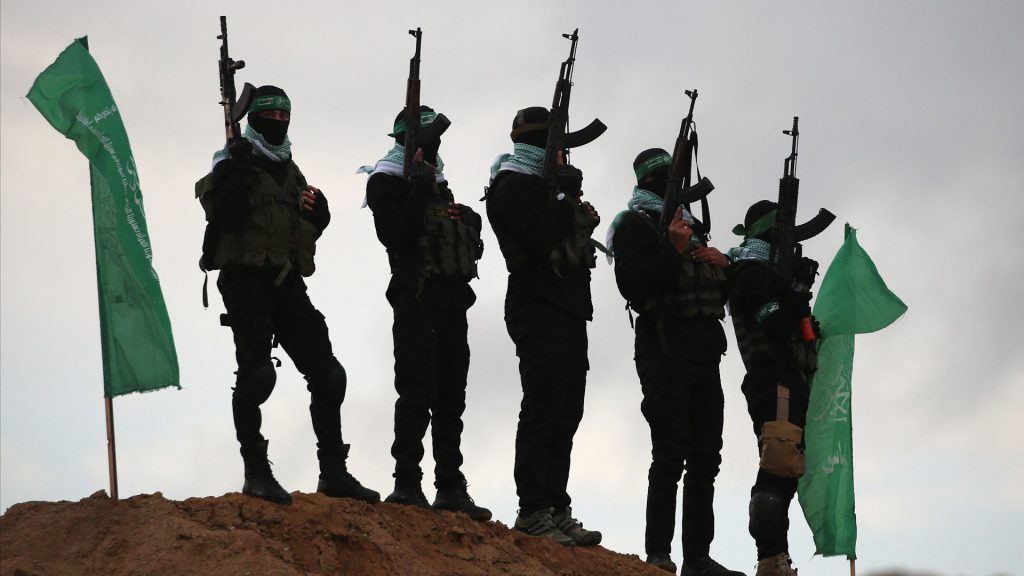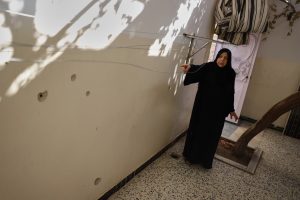Hamas running out of cash as Gaza starves under blockade
Ella Greene April 17, 2025 0
- Israel’s blockade has cut Hamas off from major revenue sources, including aid seizures and taxed goods, creating a deep financial crisis. Intelligence sources say Israeli strikes and surveillance have disrupted Hamas’s cash distribution network, delaying payments and damaging recruitment efforts.
- Hamas has stopped paying many employees, and even top officials received only partial salaries during Ramadan.
- Aid groups report soaring malnutrition in Gaza, and the U.N. has warned of famine risks amid the ongoing blockade.
Full Story
Hamas is facing a financial crisis as Israel’s continued blockade on Gaza disrupts the militant group’s access to revenue and weakens its internal operations, according to a report first published by The Wall Street Journal. Officials from Arab, Israeli and Western sources say Israel’s restrictions have significantly reduced the group’s ability to profit from aid and commercial goods, cutting off a key revenue stream.
Before the war, Hamas reportedly seized and resold portions of humanitarian aid and taxed goods brought into Gaza. Israeli officials say Hamas also used overseas funds to purchase goods for resale, generating cash through black-market sales. These activities largely ceased after Israel sealed Gaza’s borders in March. Humanitarian organizations have criticized the blockade, warning it could push Gaza’s 2 million residents back into famine-level hunger.
Financial difficulties during the blockade
The group’s finances have deteriorated to the point that salary payments to many Hamas government employees have stopped. Midway through Ramadan in March, even senior members began receiving only half of their wages, and rank-and-file fighters — typically earning $200 to $300 monthly — saw reduced or delayed pay.
According to intelligence sources, Israel’s targeted killings of key Hamas officials involved in cash distribution have also strained the group’s financial network. Hamas’s usual methods of courier-based or centralized cash payouts have become high-risk under Israeli surveillance, forcing them to adopt more limited person-to-person disbursements.
The diminished ability to pay has made it harder for Hamas to recruit new fighters and maintain internal unity. At the same time, civilian protests against the group’s governance have grown in parts of Gaza.
How did Hamas make money before the war?
Hamas’s income previously included a $15 million monthly cash infusion from Qatar and other funding from regions such as West Africa, South Asia and the U.K., which Western and Arab officials say amounted to a reserve of roughly $500 million, much of it held in Turkey. After Israel restricted direct cash transfers into Gaza, Hamas allegedly turned to aid and goods shipments as a substitute source of income.
Officials say the group charged merchants fees, collected customs duties at border checkpoints and seized goods for resale. Hamas also bought aid abroad and sold it inside Gaza for cash. These practices, combined with funds taken from local bank branches at the onset of the war, allowed the group to temporarily stabilize its finances before the border closure in March halted those channels.
What are the broader effects of the aid cutoff on Gaza?
The humanitarian blockade, now in its seventh week, has significantly worsened conditions in Gaza. The United Nations and aid agencies report widespread malnutrition, especially among children. In March, more than 3,600 children were admitted with acute malnutrition — an 80% increase from February.
Israel’s Defense Minister Israel Katz has defended the aid restrictions as a tactic to undermine Hamas’s control, describing the blockade as a “pressure lever.” Hamas condemned the comments as a “public admission of committing a war crime” and accused Israel of depriving civilians of basic necessities.
Aid organizations and U.N. officials have raised concerns that Israel’s evolving aid policy may now involve prescreening recipients, with proposals for secure “stationary aid centers” under Israeli oversight. The U.N. has pushed back against such measures, calling them unacceptable.
Cash is disintegrating in Gaza
To navigate the cash shortage, Palestinians are turning to electronic payment platforms and remittances from abroad, though exchange fees can exceed 20%. Some residents have begun physically repairing damaged banknotes to keep money circulating. Analysts estimate roughly $3 billion in cash may still be in circulation in Gaza, though much of it is in poor condition or hard to access due to destroyed banking infrastructure.
Ella Rae Greene, Editor In Chief
Ella Greene
Ella and the staff at Clear Media Project (CMP) curate these articles.
Unless otherwise noted CMP does not write these articles.
The views, thoughts, and opinions expressed in the articles published on this blog belong solely to the original authors and do not necessarily reflect the views of the blog owner. The blog owner does not claim ownership of the content shared by contributors and is not responsible for any inaccuracies, errors, or omissions.
All rights and credits goes to its rightful owners. No Copyright Infringement is intended. If you believe any content infringes on your rights, please contact us for review and potential removal.





